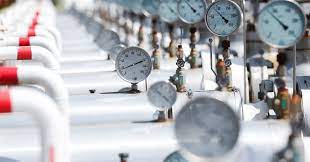The International Energy Agency (IEA) has predicted that global gas markets will remain tight next year as Russian piped gas supplies dwindle despite gas demand falling in Europe in response to high prices and energy saving measures.
According to the agency, global natural gas markets have been tightening since 2021 despite global gas consumption declining by 0.8% this year as a result of a record 10% contraction in Europe and flat demand in the Asia Pacific region. However, global gas consumption is forecast to inch up by 0.4% next year.
Gas consumption has fallen the most In Europe after contracting 10% in the first eight months of the current year driven by a 15% drop in the industrial sector as businesses curtailed production due to soaring prices. Meanwhile, Russian pipeline gas supply to Europe has dwindled to just a trickle after the shutdown of the Nord Stream 1 pipeline from Russia to Germany in early September
If Moscow carries out a threat to sanction Ukrainian energy firm Naftogaz, one of the last functioning Russian gas supply routes to Europe could be shut, exacerbating the energy crisis just as the crucial winter heating season begins.
Europe has managed to fill the gap of Russian pipeline gas this year, mainly through increased liquefied natural gas (LNG) imports. The IEA has forecast that Europe’s LNG imports will increase by over 60 billion cubic meters (bcm) this year, more than double the amount for the rest of the globe.
On the other hand, Asia’s LNG imports are expected to stay at lower levels than last year for the rest of 2022, in large part due to high gas prices in Europe helping the continent draw in more cargoes. In contrast, China’s LNG imports are expected to rise in 2023 under a series of new contracts concluded since the start of 2021 as well as a colder-than-average winter leading to additional demand from northeast Asia.
The IEA has predicted EU gas storage would be less than 20% full in February if LNG supply remains robust in the event that Russian supply to Europe completely stops from Nov. 1, but could go as low as 5% full by February if LNG supply dwindles.
 Iran Energy News Oil, Gas, Petrochemical and Energy Field Specialized Channel
Iran Energy News Oil, Gas, Petrochemical and Energy Field Specialized Channel




